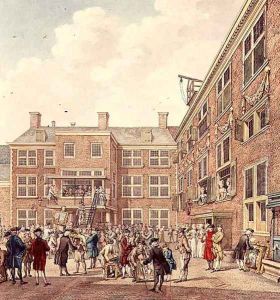Hubertus Petrus Schouten Paintings
Hubertus Petrus Schouten, also known as Huibert Schouten, was an 18th-century Dutch painter, primarily known for his landscape and animal paintings. Born in 1740 in the Netherlands, Schouten's work is characterized by the Dutch Realist tradition, which was prevalent during the time. His artwork often depicted rural scenes, farm animals, and pastoral landscapes, capturing the serene and bucolic atmosphere of the Dutch countryside.
Schouten's paintings exhibit a fine attention to detail and a fondness for the natural world. He was adept at portraying the texture of animal fur and the varied hues of the landscape, from the lush greens of the fields to the soft blues of the sky. His work resonates with the tranquility and simplicity of rural life, a theme that was very popular among the Dutch middle and upper classes during the 18th century.
Although not as widely known as his contemporaries, such as the landscape artist Meindert Hobbema or the animal painter Paulus Potter, Schouten still contributed significantly to the Dutch painting tradition. His art was well-received during his lifetime, and he was able to make a living from his craft, which was a notable achievement for artists of the period.
Schouten passed away in 1822, having spent his career dedicated to capturing the essence of the Dutch landscape and its inhabitants. His legacy is preserved in his artworks, which continue to be appreciated for their peacefulness and natural beauty. Schouten's paintings can be found in various art collections and have been displayed in museums, providing insight into the rural Dutch way of life during the 18th century.
